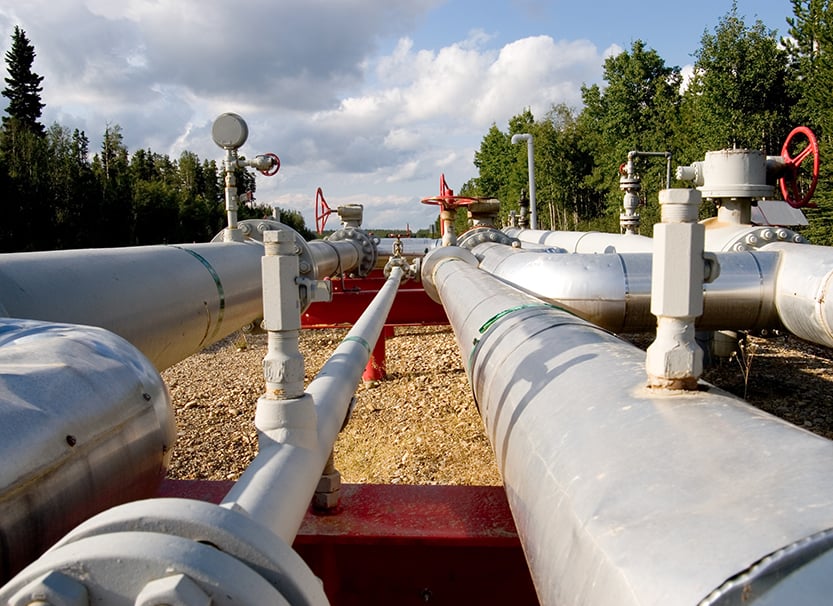EPA, Departments of Interior and Energy Announce New Coal-Friendly Policy Initiatives
On September 29, 2025, the Trump Administration unveiled a sweeping set of policy initiatives aimed at revitalizing the U.S. coal sector that spans multiple federal agencies and includes measures such as increased funding and financial incentives, relief from environmental regulatory requirements, and increased access to public lands. In the unveiling, the Administration emphasized the importance of American “energy dominance” and the increased demand for electricity to power artificial intelligence (AI) in order to ensure that the United States wins “the AI arms race” — two themes commonly highlighted by the Administration and its top officials.
EPA Proposes Overhaul of Greenhouse Gas Reporting Program
On September 16, 2025, the U.S. Environmental Protection Agency (EPA) published a proposed rule that would fundamentally reshape the federal Greenhouse Gas Reporting Program (GHGRP). 90 Fed. Reg. 44591 (Sept. 16, 2025). If finalized, this action would mark a further shift in federal greenhouse gas (GHG) policy and advance the administration’s broader deregulatory agenda.

PG&E Agrees to First-Ever Accidental Release Reporting Settlement
On July 28, 2025, the U.S. Environmental Protection Agency (EPA) announced a settlement with Pacific Gas & Electric (PG&E) for failing to promptly report an accidental release. This is the first-ever settlement for the failure to comply with the U.S. Chemical Safety and Hazard Investigation Board (CSB) Accidental Release Reporting Rule (Reporting Rule).
EPA Updates Clean Air Act Standards Applicable to Small Waste Incinerators
On June 30, 2025, the U.S. Environmental Protection Agency (EPA) finalized updates to its New Source Performance Standards (NSPS) and Emission Guidelines for Other Solid Waste Incineration (OSWI) units under the Clean Air Act (CAA). These units — combustion systems that incinerate solid waste from commercial or institutional sources not otherwise regulated under specific incinerator categories — include very small municipal waste combustors and institutional incinerators. The final rule includes applicability-related and definitional changes expanding the class of incinerators subject to NSPS, revises the OSWI subcategories and tightens emission limits for key pollutants. It also adopts changes to startup, shutdown, and malfunction (SSM), and expands testing, monitoring, reporting, and recordkeeping requirements that will affect both existing and new OSWI units.

Supreme Court Issues Split Rulings on Clean Air Act Venue Disputes
On June 18, 2025, the U.S. Supreme Court issued decisions in two significant Clean Air Act cases — EPA v. Calumet Shreveport Refining and Oklahoma v. EPA — clarifying the appropriate venue for legal challenges to certain final EPA actions. In Calumet, the Court held that EPA’s universal denials of small-refinery-exemption (SRE) petitions under the Renewable Fuel Standard program were “based on a determination of nationwide scope or effect,” and thus challenges may only be brought in the D.C. Circuit Court of Appeals. By contrast, the Court in Oklahoma held that challenges to EPA’s disapproval of State Implementation Plans (SIPs) belong in the applicable regional circuit courts because the agency’s determinations were based on facts and rationales unique to each state. Although some gray areas remain, the twin decisions put several long-standing venue issues to rest and should encourage quicker resolution of Clean Air Act regulatory challenges.
The Future of Environmental Review of Federal Permitting Remains Unsteady as White House Seeks to Rescind NEPA Regulations
On February 19, 2025, the Council on Environmental Quality (CEQ) submitted a proposed Interim Final Rule rescinding its regulations implementing the National Environmental Policy Act (NEPA). The Rule will become effective 45 days after its publication in the Federal Register, marking the end of nearly 50 years of CEQ regulations serving as the foundation for federal environmental reviews. This Interim Rule comes right at the deadline set by President Trump’s Executive Order (EO) 14154—Unleashing American Energy—which rescinded CEQ’s authority to issue NEPA regulations and revoked President Carter’s EO 11991, which had originally directed CEQ to promulgate implementing regulations.

EPA Publishes First-Of-Its-Kind Framework for Considering Cumulative Impacts Across Agency Actions
On November 21, 2024, the U.S. Environmental Protection Agency (EPA) published Notice of a newly developed draft framework intended to provide all EPA programs with a shared reference point for determining when and how to analyze or consider cumulative impacts—defined broadly to include the totality of exposures to combinations of environmental stressors and their effects on health and quality-of-life outcomes. Keeping pace with the Biden administration EPA’s environmental justice drive, key goals of the Interim Framework for Advancing Consideration of Cumulative Impacts include empowering EPA to (1) more fully and accurately characterize the realities communities face, (2) pinpoint the levers of decision making and identify opportunities for interventions that improve health and quality of life while advancing equity, and (3) increase meaningful engagement, improve transparency, and center actions on improving health and environmental conditions in communities.

U.S. EPA Removes Regulatory Affirmative Defense Provision Against Alleged Violations of Oil and Gas Facility NESHAPs
On October 22, 2024, the U.S. Environmental Protection Agency (EPA) published a final rule removing an affirmative defense from Clean Air Act (CAA) National Emission Standards for Hazardous Air Pollutants (NESHAP) regulations for the Oil and Natural Gas Production Facility and Natural Gas Transmission and Storage Facility Source Categories (Final Rule).[1] Prior to the Final Rule, owners or operators could assert an affirmative defense that alleged NESHAP standard violations were caused by an equipment malfunction.[2] A “malfunction” is defined as any sudden, infrequent, and not reasonably preventable failure of air pollution control and monitoring equipment, process equipment, or a process to operate in a normal or usual manner.[3]
EPA Issues Final Rule for Major Source Reclassification Under Clean Air Act Section 112
On Tuesday, September 10, the U.S. Environmental Protection Agency (EPA) issued a final rule establishing requirements for major sources of hazardous air pollutants — sources that emit or have the potential to emit 10 tons per year of a single hazardous air pollutant or 25 tons per year of a combination of hazardous air pollutants — that reclassify as area sources below these thresholds. Reversing a rule adopted during the Trump administration, the rule provides that sources emitting any of the seven persistent and bioaccumulative hazardous air pollutants listed under Section 112(c)(6) of the Clean Air Act must continue to comply with major source standards even if otherwise reclassified as area sources. As a result, reclassified sources will still be subject to maximum achievable control technology standards rather than less stringent standards applicable to area sources. In so doing, EPA maintains that at least 90% of the cumulative emissions of these pollutants will be subject to National Emission Standards for Hazardous Air Pollutants (NESHAP) regardless of future source reclassifications.
17 States File Complaint Challenging Constitutionality of California’s Advanced Clean Fleets Regulation
On May 13, 2024, 17 states filed a complaint in the U.S. District Court for the Eastern District of California challenging California’s Advanced Clean Fleets (ACF) regulation.

